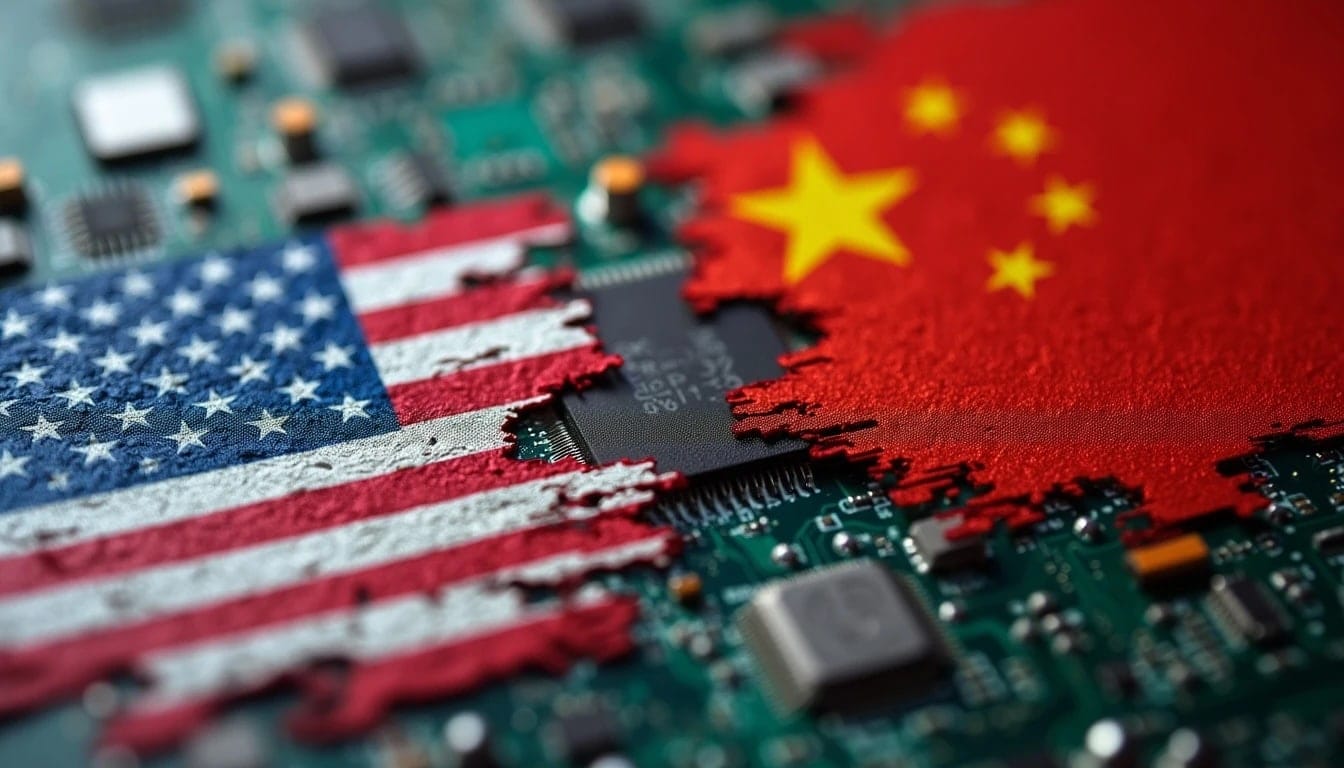The trade tensions between the two largest economic powers could trigger a historic contraction in the chip sector, affecting everything from production to technological innovation.
The semiconductor sector, a fundamental pillar of the digital economy, faces an unprecedented threat due to the growing trade tensions between the United States and China. According to a report by TechInsights, if current tariffs are maintained or increased, the global semiconductor market could experience a contraction of up to 34% by 2026.
Projected Scenarios by TechInsights
TechInsights has outlined three possible scenarios for the semiconductor market based on tariff developments:
- Moderate Tariff Scenario (10%): The market could reach sales of $777 billion in 2025 and $844 billion in 2026.
- High Tariff Scenario (30-40%): Sales might drop to $736 billion in 2025 and $699 billion in 2026.
- Extreme Tariff Scenario (over 40%): The market could contract by up to 34%, severely impacting the supply chain and investment in research and development.
Impact on the Industry and Consumers
High tariffs would not only affect chip manufacturers but also dependent sectors such as consumer electronics, automotive, and artificial intelligence. Companies like Nvidia, AMD, and Intel could face significant revenue declines and delays in the development of new technologies.
Moreover, consumers could experience increased prices for electronics and reduced availability of advanced devices. Uncertainty may also deter investment in new factories and research centers, slowing down innovation in the sector.
Strategic Responses from the Sector
In light of this situation, some companies are taking measures to mitigate risks. Apple, for instance, plans to shift some of its iPhone production to India to reduce its dependence on China. Meanwhile, TSMC has announced a $100 billion investment in the United States to strengthen its presence in the country.
However, these strategies require time and significant resources, and do not guarantee an immediate solution to the challenges posed by trade tensions.
Conclusion
The future of the global semiconductor market is at stake. The political and trade decisions made in the coming months will be crucial in determining whether the sector can avoid a significant contraction and continue to be a driver of innovation and economic growth.

